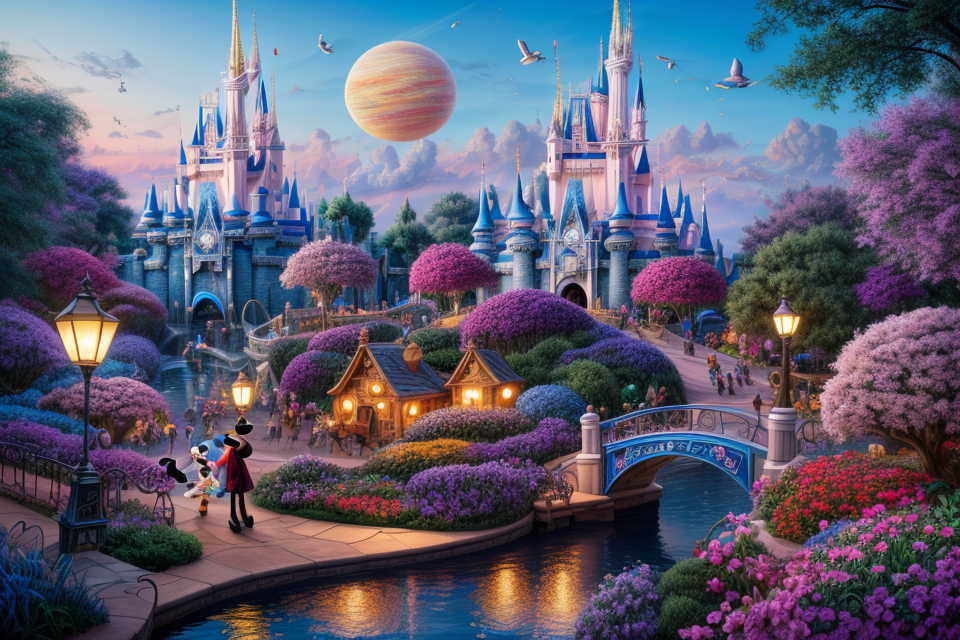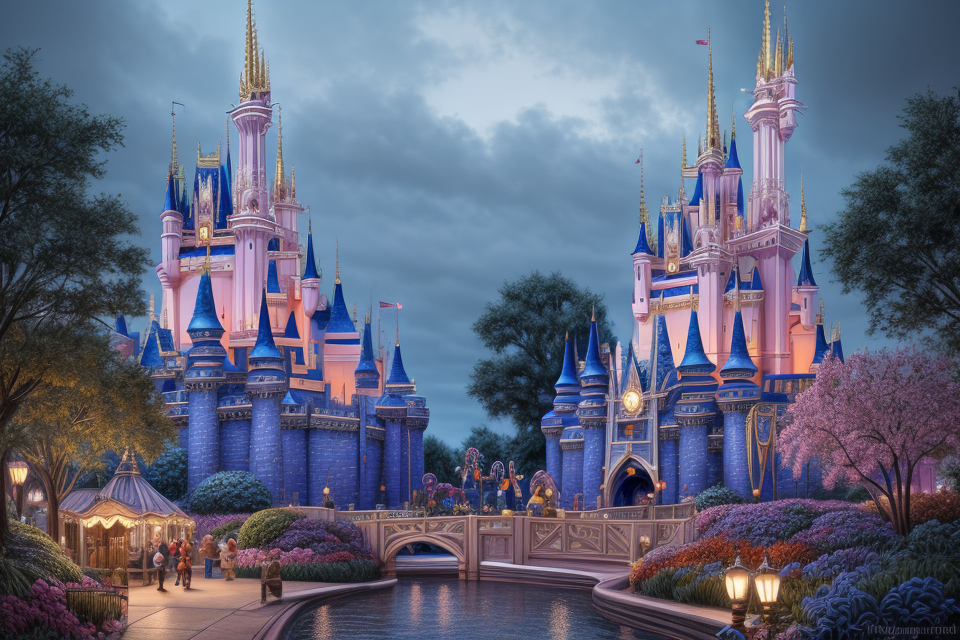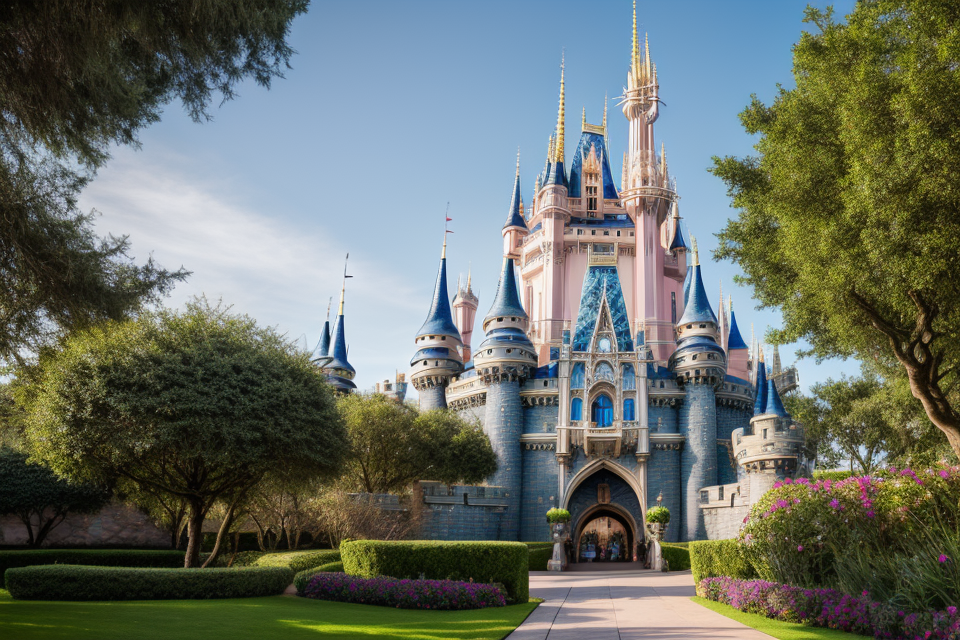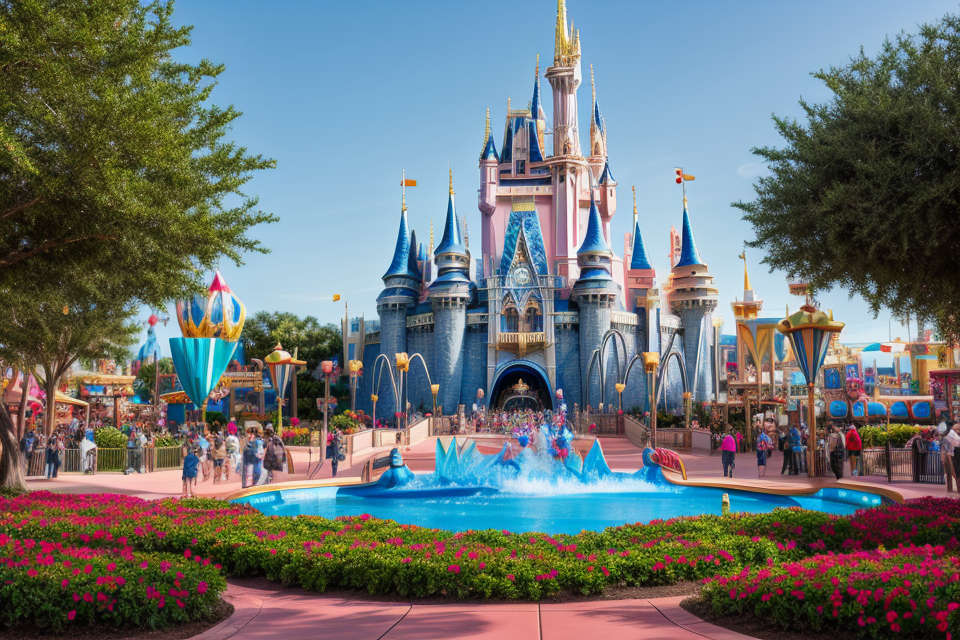
The name Walt Disney is synonymous with magic, creativity, and innovation. This American entrepreneur, animator, and film producer left an indelible mark on the world of entertainment and beyond. Walt Disney was not only a master of animation but also a visionary who transformed his dreams into reality. From creating beloved characters like Mickey Mouse and Snow White to pioneering new technologies in filmmaking, Walt Disney inspired generations with his passion, dedication, and relentless pursuit of excellence. In this article, we will explore some of the most inspiring accomplishments and achievements of this cultural icon, whose legacy continues to inspire and captivate audiences around the world.
The Visionary Founder of Disney
The Early Years
Walt Disney’s Childhood and Influences
Walt Disney, born on December 5, 1901, in Chicago, Illinois, was the fourth of five children to Elias Disney and Flora Call. His childhood was marked by frequent moves, as his father, Elias, sought better work opportunities. Walt Disney’s formative years were shaped by the influences of his family, his environment, and his love for drawing.
Elias Disney was a railroad worker, and his mother, Flora, was a strict homemaker who instilled in her children a strong work ethic and a love for reading. Walt Disney’s father encouraged his son’s artistic talents, and he often spent time drawing and sketching. He also developed a passion for storytelling, which would later become a key component of his animation work.
Walt Disney’s childhood was not without challenges. He faced bullying at school, and his family moved frequently, which made it difficult for him to form lasting friendships. However, his love for drawing and storytelling remained a constant source of comfort and inspiration.
The Beginnings of Disney
After completing high school, Walt Disney moved to Kansas City, where he began his career in the entertainment industry. He worked as a commercial artist and established his own cartoon studio, Laugh-O-Gram Studios, which produced a series of animated short films based on fairy tales and other stories.
In 1923, Walt Disney moved to Hollywood, California, with his brother Roy, and began working on a series of animated short films, including “Alice’s Wonderland” and “The Four Musketeers.” These films were met with critical acclaim and commercial success, and they established Walt Disney as a rising star in the animation industry.
In 1928, Walt Disney produced his most famous creation, Mickey Mouse, in the animated short film “Steamboat Willie.” Mickey Mouse quickly became a beloved character around the world, and he remained the symbol of Disney for decades to come.
Over the next few years, Walt Disney continued to produce a series of animated short films featuring Mickey Mouse, as well as other popular characters such as Donald Duck and Goofy. He also experimented with new animation techniques, including synchronized sound and Technicolor.
In 1937, Walt Disney released his first full-length animated feature film, “Snow White and the Seven Dwarfs,” which was a critical and commercial success. This film marked the beginning of Disney’s dominance in the animation industry and established Walt Disney as a master of the art form.
Walt Disney’s early years were marked by his love for art and storytelling, his determination to succeed, and his unwavering commitment to his vision. These qualities would continue to shape his career and his legacy for years to come.
The Disney Empire
The Walt Disney Company Today
The Walt Disney Company, commonly known as Disney, is a multinational mass media and entertainment conglomerate. It was founded by Walt Disney in 1923 and has since grown into one of the world’s largest and most successful entertainment corporations. The company is known for its diversified portfolio of brands, including Disney Parks, ESPN, Pixar, Marvel, and Lucasfilm, among others.
Disney’s Impact on Pop Culture
Disney has had a profound impact on popular culture around the world. Its films, television shows, and theme parks have become beloved staples of childhood and family entertainment. The company’s iconic characters, such as Mickey Mouse, Donald Duck, and Cinderella, have become household names and cultural symbols that transcend borders and language barriers. Disney’s influence extends beyond the realm of entertainment, as its brand and creative output have inspired countless artists, designers, and entrepreneurs to pursue their own dreams and innovations.
The Art of Animation
The First Animated Feature Film
Snow White and the Seven Dwarfs
In 1937, Walt Disney released his first animated feature film, Snow White and the Seven Dwarfs. Based on the Grimm’s Fairy Tale, Snow White, the film was a technological marvel and a massive success, earning $8 million at the box office.
Snow White and the Seven Dwarfs was the first full-length animated film to be produced by Walt Disney Productions, and it marked a significant turning point in the history of animation. The film featured an all-star voice cast, including Adriana Caselotti as Snow White, Harry Stockwell as Prince Charming, and Lucille La Verne as the Evil Queen.
The film’s animation was groundbreaking, with Disney’s animators using a multiplane camera to create a sense of depth and dimension in the scenes. The film’s use of color was also innovative, with Disney using a three-strip Technicolor process to create vibrant and lifelike colors.
The Golden Age of Animation
Snow White and the Seven Dwarfs was the beginning of what is now known as the “Golden Age of Animation.” During this period, Walt Disney Productions released a series of successful animated films, including Pinocchio (1940), Fantasia (1940), Dumbo (1941), and Bambi (1942).
These films showcased Disney’s innovative techniques in animation, including the use of synchronized sound, special effects, and music. They also featured memorable characters and storylines that captivated audiences of all ages.
The Golden Age of Animation culminated with the release of Disney’s most famous film, Disney’s 1941 film, “Dumbo”. This film was a critical and commercial success, earning $8 million at the box office and launching the careers of several Disney animators, including Ward Kimball, who would go on to work on some of Disney’s most famous films, including “Cinderella” and “Sleeping Beauty.”
Overall, the release of Snow White and the Seven Dwarfs marked a significant turning point in the history of animation, and the success of Disney’s subsequent films during the Golden Age of Animation cemented Disney’s reputation as a leader in the field of animation.
The Disney Animated Canon
Classic Animated Films
Walt Disney’s contribution to the world of animation is nothing short of extraordinary. The Disney Animated Canon, a collection of films produced by Walt Disney Animation Studios, stands as a testament to his vision and creativity. These classic animated films have captured the hearts of audiences worldwide and have become beloved classics.
Snow White and the Seven Dwarfs (1937)
Snow White and the Seven Dwarfs, released in 1937, was the first full-length animated feature film produced by Walt Disney Productions. Based on the German fairy tale, it tells the story of Snow White, a princess who is forced to flee from her jealous stepmother, the Queen. The film’s innovative animation, captivating storytelling, and memorable characters set the stage for Disney’s future animated films.
Pinocchio (1940)
Pinocchio, released in 1940, is the second film in the Disney Animated Canon. The film is based on the Italian children’s book “The Adventures of Pinocchio” by Carlo Collodi. It tells the story of a wooden puppet named Pinocchio who dreams of becoming a real boy. The film’s striking visuals, engaging storyline, and memorable songs, such as “When You Wish Upon a Star,” have made it a timeless classic.
Fantasia (1940)
Fantasia, released in 1940, is a unique animated film that showcases Disney’s innovative approach to animation. The film consists of eight animated segments set to classical music, including “The Sorcerer’s Apprentice” and “Night on Bald Mountain.” Fantasia pushes the boundaries of animation, blending classical music with animation to create a visually stunning and immersive experience for audiences.
Dumbo (1941)
Dumbo, released in 1941, is a charming animated film about a baby elephant with oversized ears who is separated from his mother and discovers he can fly. The film’s simple yet endearing story, coupled with its memorable score and adorable characters, have made Dumbo a beloved classic.
Bambi (1942)
Bambi, released in 1942, is a heartwarming animated film about a young deer named Bambi who learns to navigate the forest and the challenges that come with growing up. The film’s beautiful animation, captivating storytelling, and memorable characters have made it a timeless classic.
Victory Through Air Power (1943)
Victory Through Air Power, released in 1943, is a propaganda film produced during World War II that showcases the power of airplanes in combat. The film features a combination of live-action footage and animation and highlights the importance of air power in achieving victory.
The Three Caballeros (1944)
The Three Caballeros, released in 1944, is a delightful animated film that combines live-action footage, animation, and music to tell the story of three friends – Donald Duck, José Carioca, and Panchito Pistoles – as they travel through South America. The film’s blend of humor, music, and stunning visuals make it a delightful and entertaining experience for audiences.
Make Mine Music (1946)
Make Mine Music, released in 1946, is an anthology film that features a collection of animated short films set to music. The film includes memorable sequences such as “Ain
Innovations in Entertainment
Theme Parks and Attractions
Disneyland
Disneyland, which opened in 1955, was Walt Disney’s first theme park and a pioneering achievement in the world of entertainment. It was designed as a place where people of all ages could experience the magic of Disney through various attractions, shows, and experiences.
The park was divided into different lands, each with its own unique theme and attractions. These lands included Main Street, U.S.A., Adventureland, Fantasyland, Tomorrowland, and more. Each land was designed to transport visitors to a different world, full of imagination and wonder.
Disneyland was also known for its iconic attractions, such as Dumbo the Flying Elephant, the Matterhorn Bobsleds, and the classic Disneyland Railroad. These attractions were not only fun and exciting, but they also showcased Walt Disney’s innovative approach to entertainment.
Disney World
In 1971, Walt Disney World Resort opened in Florida, offering visitors a magical vacation experience. This massive resort complex included several theme parks, hotels, and shopping and dining areas.
The Magic Kingdom, one of the four main theme parks at Walt Disney World, was modeled after Disneyland and featured many of the same attractions, as well as some new ones. Epcot, another theme park at Walt Disney World, was designed to showcase the future of technology and innovation.
Disney’s Hollywood Studios and Animal Kingdom were also part of the Walt Disney World Resort, offering visitors the chance to experience the world of movies and the natural world, respectively.
Other Disney Parks and Resorts
Over the years, Walt Disney Parks and Resorts expanded to include theme parks and resorts around the world. These included Disneyland Paris in France, Tokyo Disney Resort in Japan, and Hong Kong Disneyland.
Each of these parks and resorts was unique, with its own set of attractions and experiences that reflected the culture and history of the region. However, they all shared the same magical spirit and commitment to providing guests with an unforgettable experience.
In addition to the theme parks, Walt Disney Parks and Resorts also included water parks, shopping and dining areas, and other recreational facilities. These were all designed to create a complete vacation experience for visitors, making Walt Disney a leader in the hospitality industry.
Television and Film Production
Disney Television Shows
During the 1950s, Walt Disney began exploring the potential of television as a new medium for storytelling. He saw the opportunity to bring his iconic characters and beloved stories to the small screen, and thus, the Disney anthology series was born. This weekly program, simply titled “Disneyland,” debuted on ABC in 1954 and showcased a variety of Disney’s animated shorts, live-action films, and documentaries. It became an instant hit, captivating audiences and establishing Disney as a major player in the television industry.
The Disney anthology series underwent several iterations throughout the years, adapting to changing times and technologies. It evolved into “Walt Disney’s Wonderful World of Color” in the 1960s, incorporating the newly developed color television technology, and later became “The Disney Sunday Movie” in the 1980s, featuring made-for-television films and specials.
Disney Live-Action Films
In addition to television, Walt Disney also made significant strides in the realm of live-action film production. His dedication to producing high-quality, family-friendly entertainment set a new standard in the industry. Disney’s first live-action film, “Treasure Island” (1950), was a critical and commercial success, showcasing the studio’s ability to adapt classic literature for the big screen.
The 1960s saw the release of several groundbreaking live-action films, including “Swiss Family Robinson” (1960), “The Absent-Minded Professor” (1961), and “Mary Poppins” (1964). These films featured innovative special effects, memorable music, and captivating storytelling, earning critical acclaim and widespread commercial success.
Disney continued to push the boundaries of live-action filmmaking in the following decades, producing a diverse range of films that appealed to audiences of all ages. Films such as “The Love Bug” (1968), “The Black Stallion” (1979), “The Mighty Ducks” (1992), and ” Remember the Titans” (2000) showcased Disney’s commitment to producing quality family entertainment that celebrated teamwork, friendship, and the human spirit.
By venturing into the realm of live-action film production, Disney further solidified his status as a visionary and innovator in the entertainment industry. His passion for storytelling and commitment to creating timeless, family-friendly content continue to inspire generations of filmmakers and audiences alike.
The Legacy of Walt Disney
Walt Disney’s Personal Life
Marriage and Family
Walt Disney’s personal life was marked by his loving marriage and devoted family. In 1925, he married his beloved wife, Lillian Bounds, with whom he shared a deep bond. The couple went on to have two daughters, Diane and Sharon, who would later play crucial roles in the growth and development of Disney’s company. Walt’s love for his family was evident in the many sacrifices he made to ensure their happiness and well-being.
Death and Tributes
Tragically, Walt Disney’s life was cut short when he passed away on December 15, 1966, at the age of 65. His death was a profound loss for the world of entertainment and his millions of fans. In honor of his remarkable life and contributions, tributes poured in from all corners of the globe. Disneyland, the Happiest Place on Earth, was lit up in black and white to mourn the loss of its visionary creator. A beautiful memorial service was held at St. Paul’s Cathedral in London, where over 2,000 mourners gathered to pay their respects. Even today, Walt Disney’s legacy continues to inspire generations with his timeless creations and the magic he brought to the world.
The Walt Disney Company’s Future Plans
Upcoming Projects and Plans
- Expansion of Disney+ with new original content and acquisitions
- Continued investment in theme parks and resorts
- Development of new technologies for immersive entertainment experiences
Disney’s Commitment to Innovation and Creativity
- Emphasis on diversity and inclusion in storytelling and casting
- Focus on sustainability and environmental responsibility in operations and productions
- Collaboration with cutting-edge technology companies to create new forms of entertainment
Overall, the Walt Disney Company is poised to continue its legacy of innovation and creativity in the years to come, building on the foundation laid by its visionary founder. With a strong commitment to both tradition and progress, the company is set to delight and inspire audiences for generations to come.
Walt Disney’s Continued Inspiration
Lessons from Walt Disney’s Life and Work
Walt Disney was not only a visionary animator and filmmaker, but also a shrewd businessman and a passionate storyteller. His life and work have left an indelible mark on the world of entertainment, and his legacy continues to inspire generations of artists, animators, and dreamers.
One of the most significant lessons that can be gleaned from Walt Disney’s life and work is the importance of perseverance and determination. Walt Disney faced numerous setbacks and failures throughout his career, but he never gave up on his dreams. He continued to work tirelessly, innovating and experimenting until he achieved the success that he desired.
Another important lesson is the power of imagination and creativity. Walt Disney was a master at visualizing ideas and bringing them to life on the screen. He believed that anything was possible if you used your imagination, and he encouraged his employees to think outside the box and to dream big.
Finally, Walt Disney’s work teaches us the value of storytelling and the power of emotional connection. He understood that stories had the power to transport audiences to different worlds and to evoke powerful emotions. He poured his heart and soul into every project he undertook, and his films continue to resonate with audiences today because of their ability to tap into the deepest human emotions.
The Enduring Appeal of Disney
Despite the passing of many years since Walt Disney’s death, his work continues to captivate audiences of all ages. The enduring appeal of Disney lies in its ability to tap into the universal human experience and to evoke powerful emotions through storytelling, music, and animation.
Disney’s timeless stories and memorable characters have become a part of our cultural fabric, and they continue to inspire new generations of fans. From the magic of Snow White and the Seven Dwarfs to the epic adventures of Star Wars, Disney has become a symbol of hope, joy, and wonder for people all around the world.
Moreover, Disney’s commitment to innovation and technological advancement has allowed it to remain at the forefront of the entertainment industry. From the early days of black and white animation to the stunning visuals of modern 3D cinema, Disney has always been at the cutting edge of technological innovation.
In conclusion, the magic of Walt Disney continues to inspire and captivate audiences today, reminding us of the power of imagination, creativity, and storytelling. Through his work, we can learn valuable lessons about perseverance, determination, and the importance of following our dreams.
FAQs
1. What was Walt Disney’s most significant accomplishment?
Walt Disney’s most significant accomplishment was the creation of the Disney Company, which has become one of the most successful and beloved media companies in the world. He started the company in 1923 with his brother Roy, and over the years, he developed it into a powerhouse that produces films, television shows, theme parks, and more.
2. What inspired Walt Disney to become a animator and filmmaker?
Walt Disney was inspired by the success of his brother Roy, who worked in the film industry. Walt saw the potential for animation as a new form of storytelling and was inspired by the works of other animators such as Max Fleischer and Charlie Chaplin. He believed that animation could be used to create a new kind of entertainment that would appeal to audiences of all ages.
3. What were some of Walt Disney’s biggest challenges?
Walt Disney faced many challenges throughout his career, including the Great Depression, World War II, and the rise of television. Despite these challenges, he remained committed to his vision and continued to innovate and push the boundaries of what was possible in animation and filmmaking.
4. How did Walt Disney impact the animation industry?
Walt Disney had a significant impact on the animation industry. He developed new techniques for animation, such as the multiplane camera, which allowed for more complex and realistic movements. He also created a new style of animation that emphasized personality and expressiveness in characters. His work influenced generations of animators and filmmakers, and his company continues to be a leader in the industry today.
5. What was Walt Disney’s legacy?
Walt Disney’s legacy is one of innovation, creativity, and imagination. He inspired generations of artists, animators, and filmmakers with his work, and his company continues to entertain and inspire people around the world. He was a true visionary who believed in the power of storytelling and the magic of animation, and his legacy continues to live on through his films, theme parks, and other creative endeavors.


